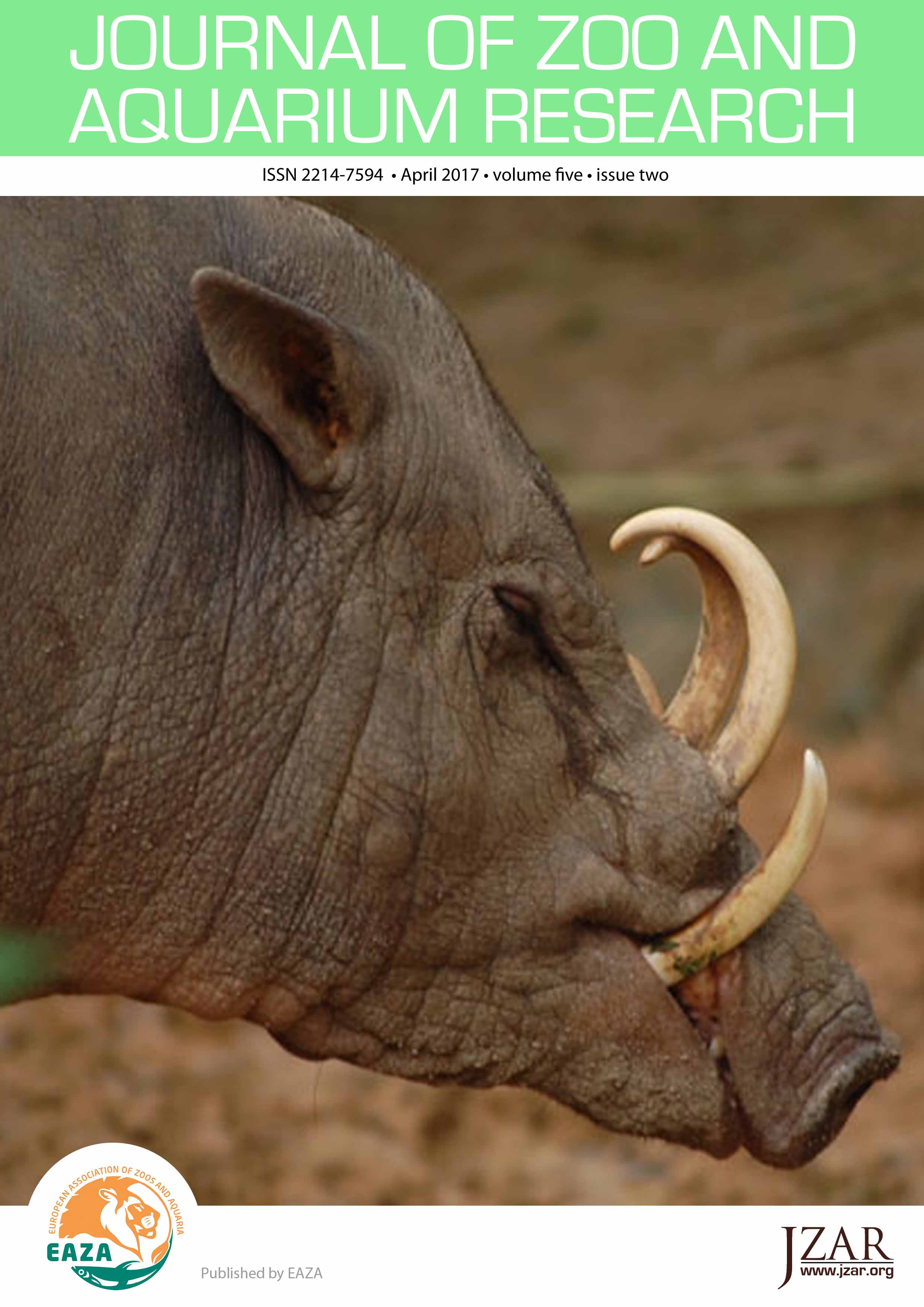Chitin supplementation in the diets of captive giant anteaters (Myrmecophaga tridactyla) for improved gastrointestinal function
DOI:
https://doi.org/10.19227/jzar.v5i2.170Abstract
Clinical issues associated with keeping giant anteaters (Myrmecophaga tridactyla) in captivity may be linked with colon health and digestive function. Chronic loose stools are one such problem often suspected to be related to dietary intake. The objective of this study was to determine the acceptability, digestibility and faecal composition in a population of captive giant anteaters on four different experimental diets, including a baseline diet (B) comprising high fibre primate biscuit and dry feline diet, ground and mixed together then blended with water, or a commercial dry insectivore diet (INS), also ground and mixed with water. Other treatments included addition of 5 or 10% of dry matter (DM) as ground chitin added to B. No difference in faecal DM or faecal organic matter content was observed across all experimental diets; faecal ash was increased on B5 compared to B10 or INS treatments, indicating a possible impact on mineral nutrition. Similarly, no differences were observed in DM digestibility, or neutral detergent fibre (NDF) or acid detergent fibre (ADF) fermentation across all diets. The majority of the dietary components of the four different diets are highly digestible and/or fermentable (> 90% for all except fibre fractions). Crude fat and ADIN digestibility, and calcium and magnesium absorption were significantly higher in the diet that was formulated containing 5% chitin. Apparent digestion of NDF (82-91%) or ADF (74-88%), as measures of chitin, did not differ statistically among the diets in this study; ranges of disappearance of these components are high compared to other mammals, but within the ranges reported for other species.
Downloads
Published
How to Cite
Issue
Section
License
JZAR fulfils the DOAJ definition of open access and provides free and open access to the full text of all content without delay under a Creative Commons licence. The copyright holder of JZAR publications grants usage rights to third parties, allowing for immediate free access to the work and permitting any user to read, download, copy, distribute, print, search, or link to the full texts of articles.







